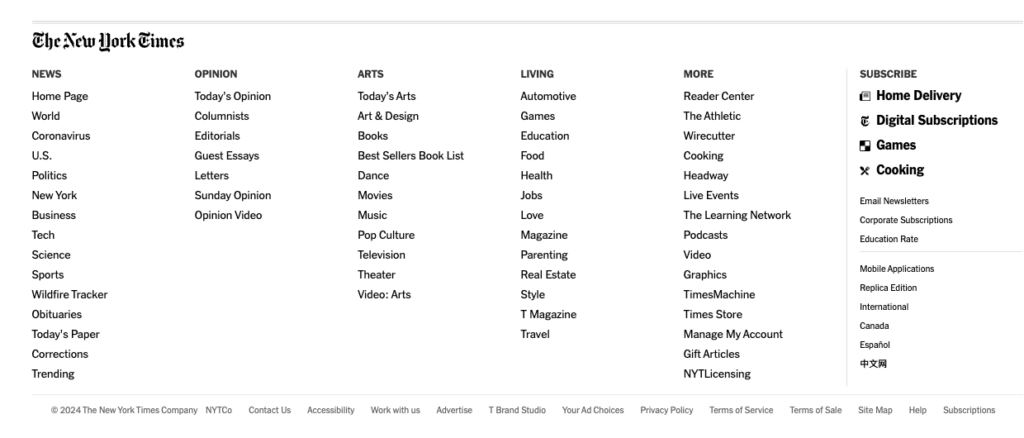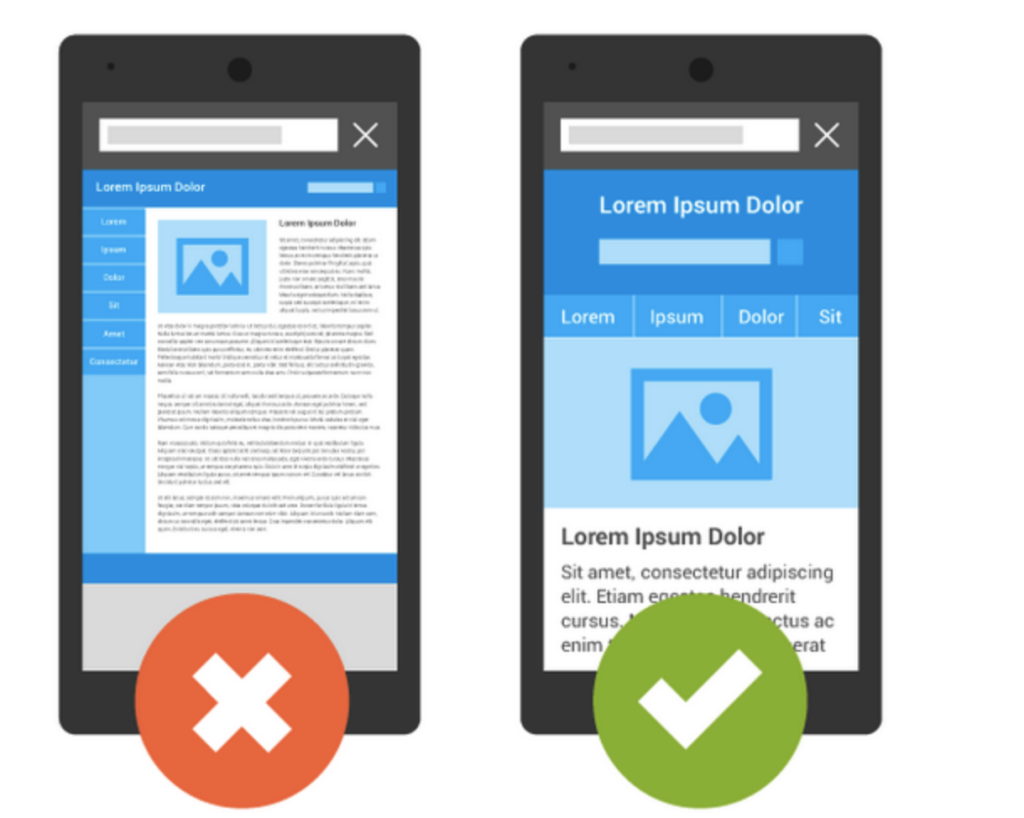
Navigating the digital landscape today requires a solid understanding of mobile SEO. Optimizing your website for mobile devices is crucial for online success.
From responsive design to fast loading speeds, every detail matters in enhancing user experience and search engine rankings. Stay ahead of the curve by mastering the art of mobile SEO and ensuring that your content reaches a broader audience effectively.
Table of Contents
Key Takeaways
- Dominate Mobile Search: Optimize your website for mobile devices to reach a wider audience and soar in search engine rankings.
- Test and Refine: Regularly assess your website’s mobile-friendliness using Google’s Mobile-Friendly Test and make adjustments to ensure a seamless user experience.
- Actionable Insights: Utilize analytics data to understand how users interact with your website on mobile devices and tailor your SEO strategies to meet their needs.
- Prioritize User Experience: Focus on enhancing mobile user experience by optimizing site navigation, readability, and overall design for a frustration-free experience on smaller screens.
- Speed Up Your Site: Improve site speed for mobile users by implementing techniques like image compression, minimizing redirects, and leveraging browser caching. This ensures users don’t abandon your site due to slow loading times.
- Craft Compelling Mobile Content: Develop concise, visually appealing, and easy-to-consume content specifically designed to engage mobile users effectively.
Importance of Mobile SEO
Impact of Mobile Searches
Mobile searches have exceeded desktop searches, indicating a shift in user behavior towards mobile devices. This trend emphasizes the necessity for businesses to prioritize mobile SEO strategies.
With the increasing number of people using smartphones and tablets to browse the internet, optimizing websites for mobile devices has become crucial. Ignoring mobile SEO can lead to a significant loss in potential traffic and revenue opportunities.
Significance of Google’s Mobile-First Index
Google’s mobile-first index prioritizes the mobile version of websites for indexing and ranking. Websites that are not mobile-friendly may experience a drop in search rankings, affecting their visibility and organic traffic.
Ensuring that a website is responsive and provides a seamless user experience on mobile devices is essential for maintaining a strong online presence. By adhering to Google’s mobile-first index guidelines, businesses can improve their search visibility and attract more organic traffic.
Role of Mobile SEO in Driving Sales
Mobile SEO plays a critical role in driving sales by optimizing websites for presale searches. When users search for products or services on their mobile devices, websites that are well-optimized for mobile SEO are more likely to appear at the top of Google search results.

Assessing Mobile-Friendliness
Responsive Design
Responsive design is crucial for a website to adapt to various screen sizes, ensuring easy navigation for users. Websites with responsive design rank higher in search results due to improved user experience.
Ensuring that your website is mobile-friendly involves checking the layout and content display on different devices. A site audit can identify areas for improvement in terms of sizes and number of elements on mobile screens.
Mobile Usability
Mobile usability focuses on how friendly and intuitive a website is when accessed on mobile devices. High mobile usability reduces the bounce rate, keeping visitors engaged and improving overall search ranking.
Neglecting mobile-friendliness can lead to a high bounce rate as users struggle to navigate or access content. This, in turn, affects the site’s overall ranking factor, impacting its visibility compared to competitors.

Conducting Tests
To ensure optimal performance across devices, conducting a friendly test is essential. Regularly checking your website’s mobile-friendliness helps maintain a positive user experience, ultimately leading to improved search rankings. It also allows you to stay ahead of competitors by continuously optimizing for mobile users.
Checking Mobile Traffic Insights
Understanding Behavior
Analyzing mobile traffic data provides crucial insights into user behavior on websites. By comparing mobile traffic with desktop traffic, businesses can understand how users interact differently based on the device they use.
Mobile traffic data reveals essential metrics such as bounce rates, session durations, and popular pages visited by mobile users. These insights help businesses optimize their websites for better user experiences.
Tailoring Marketing Strategies
Identifying trends in mobile traffic is key to tailoring effective marketing strategies. By recognizing which content resonates most with mobile users, businesses can create targeted campaigns that drive engagement and conversions.
By leveraging mobile traffic insights, businesses can optimize their advertising efforts to reach a wider mobile audience effectively. This targeted approach leads to improved conversion rates and higher ROI on marketing campaigns.

Effective Tracking with Google Analytics
Utilizing tools like Google Analytics is invaluable for accurately tracking mobile traffic insights. Businesses can monitor various metrics such as traffic sources, user demographics, and behavior flow specific to mobile users.
Google Analytics provides detailed reports on mobile traffic performance, enabling businesses to identify areas for improvement and capitalize on successful strategies. This data-driven approach ensures informed decision-making for optimizing mobile user experiences.
Enhancing Mobile User Experience
Site Speed
Improving site speed is crucial for mobile SEO. Slow loading times can lead to high bounce rates, impacting SEO rankings negatively. By optimizing images and reducing server response times, site speed can be significantly enhanced.
Dwell Time Optimization
Dwell time, the duration a user spends on a webpage before returning to search results, is a critical factor in SEO ranking. Engaging mobile experiences play a significant role in increasing dwell time, indicating to search engines such as Google that the content is relevant and valuable to users.
Viewport Configuration
Configuring the viewport meta tag correctly is essential for ensuring that web pages display correctly on various devices with different screen sizes. By specifying the viewport width and initial scale, websites can provide an optimal viewing experience for users accessing them on smartphones or tablets.
Navigation Enhancement
Streamlining website navigation is key to improving mobile usability. Clear and intuitive navigation menus make it easier for users to find information quickly and navigate through different sections of the website seamlessly. This contributes to a positive user experience and encourages longer dwell times.

Image Optimization
Optimizing images for mobile devices involves compressing files without compromising quality. This practice reduces loading times and enhances overall site performance on smartphones. By implementing lazy loading techniques and using appropriate image formats, websites can deliver a smoother browsing experience.
Optimizing Mobile User Experience for Speed and Readability
Prioritizing Performance
Mobile users expect a lightning-fast browsing experience. Slow loading times can lead to frustration and a high bounce rate, ultimately hurting your search engine ranking. Optimizing your website for speed is crucial for mobile SEO success.
Crafting Content for Readability
Engaging users on mobile devices requires content that is easy to digest and visually appealing. Move away from dense text blocks and embrace formats like videos, infographics, and concise text snippets. Bullet points and numbered lists further enhance readability by breaking down information into bite-sized chunks.
Balancing Speed and Image Quality
Images can significantly impact website loading speed on mobile devices. Luckily, you don’t have to sacrifice quality for performance. Techniques like using the right image formats (JPEG for photos, PNG for graphics) and compressing files with tools like TinyPNG or Squoosh can significantly reduce file size without compromising visual appeal.

Additional Speed Optimization Techniques
Implementing caching mechanisms, where browsers store website data locally to avoid reloading resources on every visit, can further enhance speed. While separate URLs for mobile sites can improve crawler efficiency for search engines, it’s a more technical aspect you can discuss elsewhere if applicable.
Leveraging Social Media for Mobile SEO
Optimizing Content
Mobile SEO greatly benefits from social media by enhancing visibility and engaging users effectively. By incorporating social media strategies into your SEO efforts, you can reach a broader audience and drive more traffic to your website.
Optimizing social media content for mobile users is crucial for improving SEO rankings. Ensure that your posts are concise, visually appealing, and easy to consume on mobile devices. Utilize relevant hashtags and keywords to enhance discoverability.
Driving Traffic
One key advantage of leveraging social media platforms for mobile SEO is the ability to drive significant traffic to your website. By sharing valuable content, interacting with followers, and utilizing features like stories and live videos, you can attract more visitors from mobile devices.
- Improved visibility
- Enhanced engagement
- Increased website traffic

Best Practices
To make the most of social media for mobile SEO, focus on creating shareable content that resonates with your target audience. Encourage user interaction through polls, questions, and contests to boost engagement levels.
Utilize tools like SEMrush to analyze performance metrics and optimize your social media strategy accordingly. Monitor trends in media queries and adjust your content to align with popular search terms.
Implementing Technical SEO for Mobile
Structured Data
Structured data plays a crucial role in mobile SEO by providing search engines with detailed information about the content on a webpage. It helps Google Search Console understand the context of the page, leading to improved visibility in search engine results pages.
Implementing structured data involves adding specific markup to the HTML of a webpage. This markup includes details like title tags, descriptions, and other relevant information that search engines use to display rich snippets in search results.
Mobile Sitemaps
Creating a mobile sitemap is essential for optimizing a website for mobile search. A mobile sitemap is a file that contains a list of URLs on a website, specifically designed for mobile users. This helps search engines crawl and index mobile-friendly content more efficiently.
By including only mobile-friendly URLs in the sitemap, website owners can ensure that their site is properly optimized for mobile search. This improves the chances of ranking higher in mobile search results and driving more organic traffic to the site.
Rich Snippets and AMP
Optimizing for rich snippets and Accelerated Mobile Pages (AMP) is another critical aspect of mobile SEO. Rich snippets are enhanced search results that provide additional information such as ratings, reviews, and images directly on the search engine results page.
AMP, on the other hand, is a framework that creates faster-loading versions of web pages for mobile users. By implementing AMP on relevant pages, websites can significantly improve their loading speed and user experience, leading to higher rankings in mobile search results.

Implementing Best Practices
To enhance mobile search performance, it’s essential to follow technical SEO best practices diligently. This includes optimizing title tags, meta descriptions, and headings for mobile devices specifically.
Ensuring that the website is responsive and provides a seamless user experience across different screen sizes is crucial for maintaining high rankings in mobile search.
- Pros of Implementing Technical SEO for Mobile:
- Improved visibility in search engine results.
- Enhanced user experience on mobile devices.
- Cons of Neglecting Technical SEO for Mobile:
- Decreased organic traffic from mobile users.
- Lower rankings in mobile search results.
Preparing for Voice Search Integration
Voice Search Optimization
Voice search has revolutionized the way users interact with search engines, especially on mobile devices. To optimize for voice technology, focus on long-tail keywords and natural language to match voice searchers’ queries.
- Long-tail keywords
- Natural language matching
Optimizing content for voice assistants involves structuring information in a conversational tone, answering common questions concisely, and providing direct answers to queries. By adapting content to suit voice search preferences, websites can enhance their visibility and engagement with users.
Benefits of Voice Search Preparation
By preparing for voice search integration, websites can improve their SEO strategies significantly. This proactive approach allows businesses to capture a larger audience segment that prefers using voice commands over traditional typing methods.
- Enhanced user experience
- Higher website traffic
- Improved search engine ranking
Adopting voice search optimization early on ensures that websites are well-positioned to capitalize on the increasing trend towards voice searches. As more users rely on voice assistants like Google Assistant and Siri, businesses that tailor their content accordingly will have a competitive edge in the digital landscape.

Closing Thoughts
The comprehensive guide on mobile SEO has shed light on the critical aspects of optimizing websites for mobile devices.
From assessing mobile-friendliness to enhancing user experience and optimizing site speed, each step plays a crucial role in boosting a website’s visibility and engagement on mobile platforms. Crafting tailored content, leveraging social media strategies, and implementing technical SEO further solidify the foundation for a successful mobile SEO strategy.
To stay ahead in the ever-evolving digital landscape, continuous monitoring, adaptation to new trends, and staying informed about algorithm updates are essentia. By implementing the strategies outlined in this guide and staying proactive in refining mobile SEO practices, individuals can ensure their online presence remains competitive and relevant in reaching their target audience effectively.
Related Article:
The following article may contain the author’s opinions and interpretations of the subject matter. Any of the products, services, or platforms mentioned is not sponsored or affiliated.
Featured Image courtesy of Kenny Eliason on Unsplash
